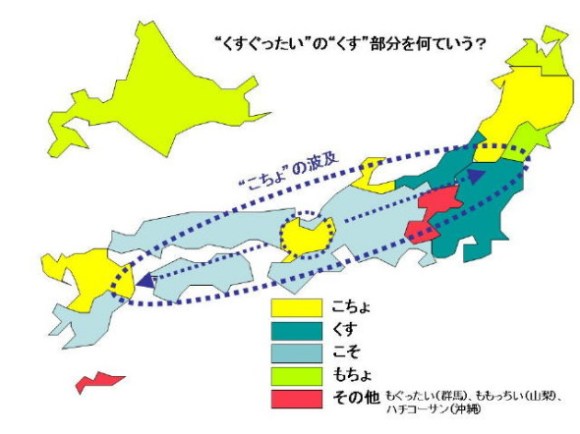 If you’re American, do you usually drink at the “water fountain,” the “drinking fountain,” or (my personal favorite, all you Rhode Islanders) the “bubbler”? And how about that fizzy fountain beverage–what do you call it in your neck of the woods?
If you’re American, do you usually drink at the “water fountain,” the “drinking fountain,” or (my personal favorite, all you Rhode Islanders) the “bubbler”? And how about that fizzy fountain beverage–what do you call it in your neck of the woods?
In the same way that the above-mentioned drink is known variously to American speakers of English as soda, pop, or coke, Japanese speakers also use different terms for the same thing depending on where they live. In fact, Japanese regional dialects, known as hōgen (方言), can differ so much from the standard Japanese (hyōjungo [標準語]) spoken in the Tokyo area and national media, that subtitles are often necessary when someone speaks with a thick local accent on TV. It’s not just the pronunciation that differs; often the form of words and syntactical structures are completely distinct.
To show you what we’re talking about, we’d like to introduce five examples of words that look and sound completely different from standard Japanese when said in regional dialects. If you’re a speaker of Japanese and you use one of these words when speaking to someone from a different part of the country, you may be met with a blank stare if your terms for the same thing are mutually unintelligible.
We hope all of you linguistics-loving readers enjoy the following language maps and discussion!
Remember, just because a particular prefecture or region tends to use a specific local word more than its standard Japanese equivalent, that doesn’t mean that all of the people use it on a regular basis or are even familiar with it. There may even be further regional variations within the prefecture as well.
Please refer to this map of Japan’s 47 prefectures if you need to brush up on your geography while reading about the regional linguistic variations:
1. How do you say “Band-Aid/adhesive bandage” in some regional dialects of Japanese (standard Japanese: bansōkō)?
Japanese speakers tend to use either the traditional Japanese word, bansōkō, or the borrowed English term, bandoeido, on a regular basis. Here are some other regional terms, according to the map:
The light greenish areas (Hokkaido, Wakayama, and Hiroshima Prefectures) often refer to a band-aid as sabio.
The light blue areas around Tokyo and central Japan often use the typical English term, bandoeido.
The orange areas that cover all of Tohoku and some prefectures down south often use the word kattoban.
The light pinkish areas often use the standard term, bansōkō.
The purple areas mostly around Kyushu often use the word ribateepu.
Toyama Prefecture, the lone prefecture in white, often uses the word kizuban.
The Japanese author of this source article also recalls saying pecchin (ペッチン) as a child, but he was unsure if this term is a child-specific use or a regional use of the word.
2. How do you say “not feeling well/exhausted” in some regional dialects of Japanese (standard Japanese: taichō ga warui)?
The above map has an interesting way of displaying information. Each dialectal term is assigned a color gradation. For each term there are three columns to the right: the lightest color gradient signifies that the term is used 50 percent or less of the time in a specific area, the middle color gradient means that it used 51-75 percent of the time, and the darkest color gradient means that it is used 76 percent or more of the time. From top to bottom, the dialectal terms are:
erai
shindoi
darui
kowai (Note: this one could be especially confusing because kowai typically means “scary” in standard Japanese)
kitsui
Other
There are multiple common terms in the area (white)
As you can see, erai, which is signified by the dark red patches on the map, appears to be the dialectal phrase for “not feeling well” that is used the most.
3. How do you say “ticklish” in some regional dialects of Japanese (standard Japanese: kusuguttai)?
As this map illustrates, the kusu portion of kusuguttai varies from region to region:
The yellow areas tend to say kochoguttai
The teal area surrounding Tokyo tends to say kusuguttai, the standard term
The light blue areas tend to say kosoguttai
The green areas tend to say mochoguttai
The red areas tend to use various other terms, including moguttai (Gunma Prefecture), momocchoi (Yamanashi Prefecture), and hachikoosan (Okinawa Prefecture)
Don’t you think all the regional words for “ticklish” just sound plain cute?
4. How do you say “snail” in some regional dialects of Japanese (standard Japanese: katatsumuri)?
Who knew there could be so many ways to express “snail”! According to the map (from north to south),
Sapporo (Hokkaido Prefecture) likes to say katatsumuri
Aomori likes to say either katatsumuri or namekuji
Iwate likes to say either dendenmushi or katatsumuri
Chiba likes to say either katatsumuri or maimai
Gifu likes to say ~tsumuri
Osaka likes to say dendenmushi
Hiroshima likes to say maimai
Kochi likes to say katatsumuri
Nagasaki likes to say dendenmushi
Kumamoto likes to say namekuji
Okinawa likes to say chin’nan or tsun’name
While there are relatively few total regional terms for “snail,” it is interesting to see how those different terms seem to be arbitrarily spaced out throughout the country.
5. How do you say “a stye on the eyelid” in some regional dialects of Japanese (standard Japanese: monomorai)?
We can’t think of many instances when you would need to say this word unless you’re unfortunate enough to get one while in Japan, so here’s hoping you don’t find yourself at the doctor with this map anytime soon!
The areas colored in yellow which span eastern Japan (minus Miyagi Prefecture) and a few areas down south tend to use the standard Japanese term, monomorai. Besides that, starting with the orange in the left column and working your way down to the red at the bottom of the right column, other regional terms include:
meppa
baka
memorai
menbo
mebo
mebachiko
meibo
meboita
mebō
ohimesan [literally: “princess”!]
And that’s not all; here are some even rarer terms!
okyakusan [literally: “guest”!] (Saga Prefecture)
odeki (Shiga Prefecture)
otomodachi [literally: “friend”!] (Okinawa Prefecture)
mekaigo (Gunma Prefecture)
mencho (Yamagata Prefecture)
menbou (Aichi Prefecture)
We hope you’ve enjoyed learning some interesting Japanese hōgen! These have been examples of only five words that vary across Japanese dialects–there are a whole lot more out there! Do you recognize any of them from your own travels in Japan? Or maybe you’ve heard a completely different word? Next time you’re traveling outside of Tokyo, try using one of the above words in the appropriate prefecture and impress the locals with your great command of the language!
Source/Images: Japaaan


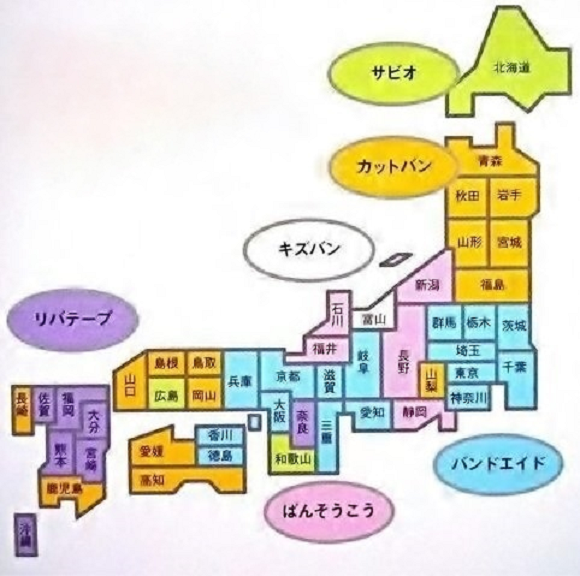
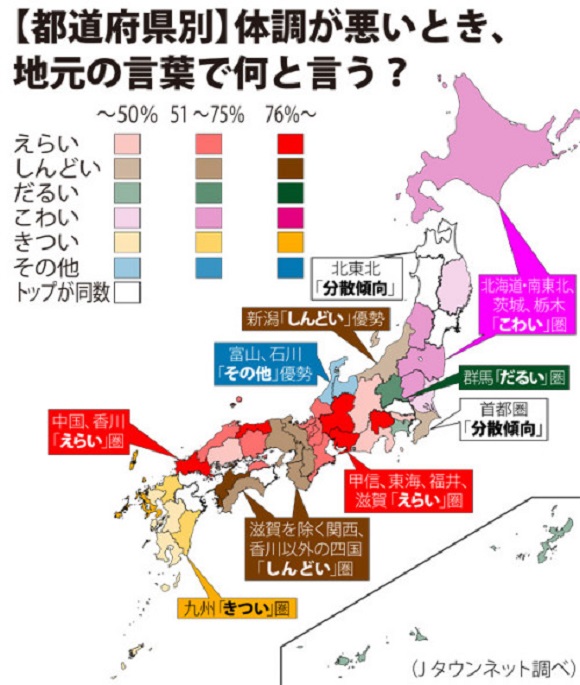

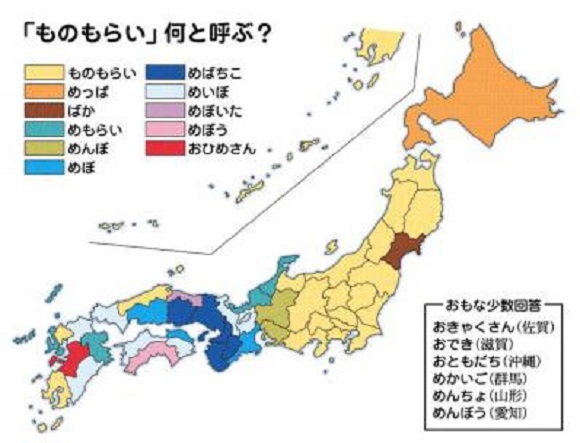
 What do you call this sitting pose? Japanese netizens polled to find differences in dialect
What do you call this sitting pose? Japanese netizens polled to find differences in dialect North Japan prefecture creates guide to help new foreign workers understand local language quirks
North Japan prefecture creates guide to help new foreign workers understand local language quirks A rice by any other name: Japanese Twitter investigates local terms for “serving”
A rice by any other name: Japanese Twitter investigates local terms for “serving” Which parts of Ishikawa are OK to travel to after Noto quake? Government shares guideline map
Which parts of Ishikawa are OK to travel to after Noto quake? Government shares guideline map Japanese book “nekotan” teaches foreign language the best way possible: by talking about cats
Japanese book “nekotan” teaches foreign language the best way possible: by talking about cats How to order snacks on a Shinkansen bullet train in Japan
How to order snacks on a Shinkansen bullet train in Japan Demon Slayer: Kimetsu no Yaiba gets new roller coaster attractions and food at Universal Studios Japan
Demon Slayer: Kimetsu no Yaiba gets new roller coaster attractions and food at Universal Studios Japan Nintendo history you can feel – Super NES, N64, and GameCube controllers become capsule toys
Nintendo history you can feel – Super NES, N64, and GameCube controllers become capsule toys New Nintendo Lego kit is a beautiful piece of moving pixel art of Mario and Yoshi【Photos】
New Nintendo Lego kit is a beautiful piece of moving pixel art of Mario and Yoshi【Photos】 Japan’s new difficult-to-drink-from beer glass protects your liver, but it’s a brutal experience
Japan’s new difficult-to-drink-from beer glass protects your liver, but it’s a brutal experience A visit to the best UFO catcher arcade in the universe!
A visit to the best UFO catcher arcade in the universe! To combat declining birth rate, Japan to begin offering “Breeding Visas” to foreigners
To combat declining birth rate, Japan to begin offering “Breeding Visas” to foreigners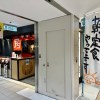 Tokyo Station’s perfect breakfast spot might just be this izakaya Japanese-style pub
Tokyo Station’s perfect breakfast spot might just be this izakaya Japanese-style pub Sex doll sharing service shut down by Chinese authorities
Sex doll sharing service shut down by Chinese authorities High-fashion Totoro cuddle purse is like an elegant stroll in the forest【Photos】
High-fashion Totoro cuddle purse is like an elegant stroll in the forest【Photos】 Hello, cosmetics! Clinique teams up with Hello Kitty this summer for first-time collaboration
Hello, cosmetics! Clinique teams up with Hello Kitty this summer for first-time collaboration “The most Delicious Cup Noodle in history” – Japan’s French Cup Noodle wins our heart【Taste test】
“The most Delicious Cup Noodle in history” – Japan’s French Cup Noodle wins our heart【Taste test】 Starbucks releases a cute Frappuccino and Unicorn Cake…but not in Japan
Starbucks releases a cute Frappuccino and Unicorn Cake…but not in Japan Kyoto Tower mascot termination reveals dark side behind cute Japanese characters
Kyoto Tower mascot termination reveals dark side behind cute Japanese characters McDonald’s Japan’s Soft Twist Tower: A phantom ice cream only sold at select branches
McDonald’s Japan’s Soft Twist Tower: A phantom ice cream only sold at select branches Yabai Ramen: What makes this Japanese ramen so dangerous?
Yabai Ramen: What makes this Japanese ramen so dangerous? Finally! Nintendo Japan expands Switch 8-bit controller sales to everybody, Online member or not
Finally! Nintendo Japan expands Switch 8-bit controller sales to everybody, Online member or not Japanese government wants to build luxury resorts in all national parks for foreign tourists
Japanese government wants to build luxury resorts in all national parks for foreign tourists 10 things you should buy at 7-Eleven in Japan
10 things you should buy at 7-Eleven in Japan Studio Ghibli releases anime heroine cosplay dresses that are super comfy to wear
Studio Ghibli releases anime heroine cosplay dresses that are super comfy to wear Woman charged for driving suitcase without a license in Osaka
Woman charged for driving suitcase without a license in Osaka Studio Ghibli unveils My Neighbour Totoro miniature house model
Studio Ghibli unveils My Neighbour Totoro miniature house model Kyoto experiencing problems with foreign tourists not paying for bus fares, but not on purpose
Kyoto experiencing problems with foreign tourists not paying for bus fares, but not on purpose Fighting mild hunger with a Japanese soda that turns into jelly in the stomach【Taste test】
Fighting mild hunger with a Japanese soda that turns into jelly in the stomach【Taste test】 Studio Ghibli’s Howl’s Moving Castle tapestry unveiled in Japan for first time
Studio Ghibli’s Howl’s Moving Castle tapestry unveiled in Japan for first time McDonald’s new Happy Meals offer up cute and practical Sanrio lifestyle goods
McDonald’s new Happy Meals offer up cute and practical Sanrio lifestyle goods Sales of Japan’s most convenient train ticket/shopping payment cards suspended indefinitely
Sales of Japan’s most convenient train ticket/shopping payment cards suspended indefinitely Sold-out Studio Ghibli desktop humidifiers are back so Totoro can help you through the dry season
Sold-out Studio Ghibli desktop humidifiers are back so Totoro can help you through the dry season Japanese government to make first change to romanization spelling rules since the 1950s
Japanese government to make first change to romanization spelling rules since the 1950s Foreigner’s request for help in Tokyo makes us sad for the state of society
Foreigner’s request for help in Tokyo makes us sad for the state of society Ghibli founders Toshio Suzuki and Hayao Miyazaki contribute to Japanese whisky Totoro label design
Ghibli founders Toshio Suzuki and Hayao Miyazaki contribute to Japanese whisky Totoro label design Doraemon found buried at sea as scene from 1993 anime becomes real life【Photos】
Doraemon found buried at sea as scene from 1993 anime becomes real life【Photos】 Tokyo’s most famous Starbucks is closed
Tokyo’s most famous Starbucks is closed Princesses, fruits, and blacksmiths: Study reveals the 30 most unusual family names in Japan
Princesses, fruits, and blacksmiths: Study reveals the 30 most unusual family names in Japan Japan’s random-destination roll-the-die train tickets: An amazingly cheap way to go…somewhere
Japan’s random-destination roll-the-die train tickets: An amazingly cheap way to go…somewhere The 100 Soundscapes of Japan: A list of Japan’s greatest natural, cultural, and industrial sounds
The 100 Soundscapes of Japan: A list of Japan’s greatest natural, cultural, and industrial sounds Only one out of five Japanese people can pronounce these hiragana — can you?
Only one out of five Japanese people can pronounce these hiragana — can you? New Miyazaki Pref. tourism ad gets laughs with the incomprehensible dialect of an ancient god
New Miyazaki Pref. tourism ad gets laughs with the incomprehensible dialect of an ancient god Japan’s new manhole cover T-shirts let you show off your local prefectural pride
Japan’s new manhole cover T-shirts let you show off your local prefectural pride Prefectural rivalry in Japan: Survey reveals which areas compete against each other, and why
Prefectural rivalry in Japan: Survey reveals which areas compete against each other, and why Our Japanese writer introduces some handy phrases so you too can speak the Kansai dialect!
Our Japanese writer introduces some handy phrases so you too can speak the Kansai dialect! Japanese vending machines will now let your buy things using your face
Japanese vending machines will now let your buy things using your face The top 10 hot springs Japanese travelers want to visit this fall
The top 10 hot springs Japanese travelers want to visit this fall We roll the die on Japan’s new random-destination train tickets
We roll the die on Japan’s new random-destination train tickets You can go surprisingly far on a single train leaving from Tokyo Station
You can go surprisingly far on a single train leaving from Tokyo Station Nine places to take unforgettable social media photos in Japan
Nine places to take unforgettable social media photos in Japan Japanese ad promoting Miyazaki Prefecture shows how foreign its own dialects can be 【Video】
Japanese ad promoting Miyazaki Prefecture shows how foreign its own dialects can be 【Video】 Japanese survey ranks Hokkaido as the most desirable prefecture to settle down in
Japanese survey ranks Hokkaido as the most desirable prefecture to settle down in Yahoo! Japan finds most alphabetic and katakana words Japanese people want to find out about
Yahoo! Japan finds most alphabetic and katakana words Japanese people want to find out about
Leave a Reply